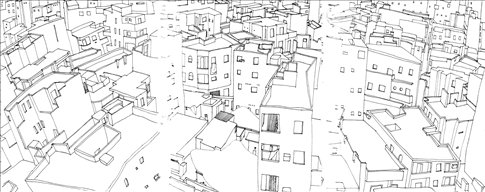
The Blue Mosque is named for the tiles, imported from
Istanbul during the days of Ottoman rule, that decorate its interior walls.
Every surface is covered with flowers and floral motifs and the simple but
elegant exterior contrasts markedly with the baroque patternings inside.
But my interest is above, in the view from the single
minaret with its curled and coiled internal staircase that rises through
patches of light and dark to a point far above the rooflines of the
neighbouring houses. From here you can see south to the Citadel and Sultan
Hasan, east to the city of the dead and Muqqatam, north to Bab Zuweila, west to
the high-rise of downtown and sometimes, on a very clear day, the three bright
shapes of the pyramids at Giza.
The surrounding district, the Darb al Ahmar, is currently
being restored and redeveloped by the Aga Khan Development Network. While rich
in monuments the district is also one of Cairo's poorest. Efforts to improve
sanitation, repair crumbling apartments and provide employment and training
have gone hand in hand with the larger work of restoring historic mosques,
shrines, palaces and madrasas.
Dina Bakhoum, programme manager for the
district, tells me that the Blue Mosque will take three years to stabilise and
restore. Time enough to repair the damages of the last six centuries, and to
remove the steel and wood buttressing that supports the arches that divide the
open courtyard from the building's interior.
From up above the street noise fades.
Competing sounds – children playing, the buzz of a band saw, the honk of taxis
and sharper beeps of motorcycles, the rattle of gas cylinders on cobbled
surfaces – are carried on the shifting wind. I look out over a landscape old
and new, beautiful and forgotten, sacred and profane. I lift my pen, and draw.